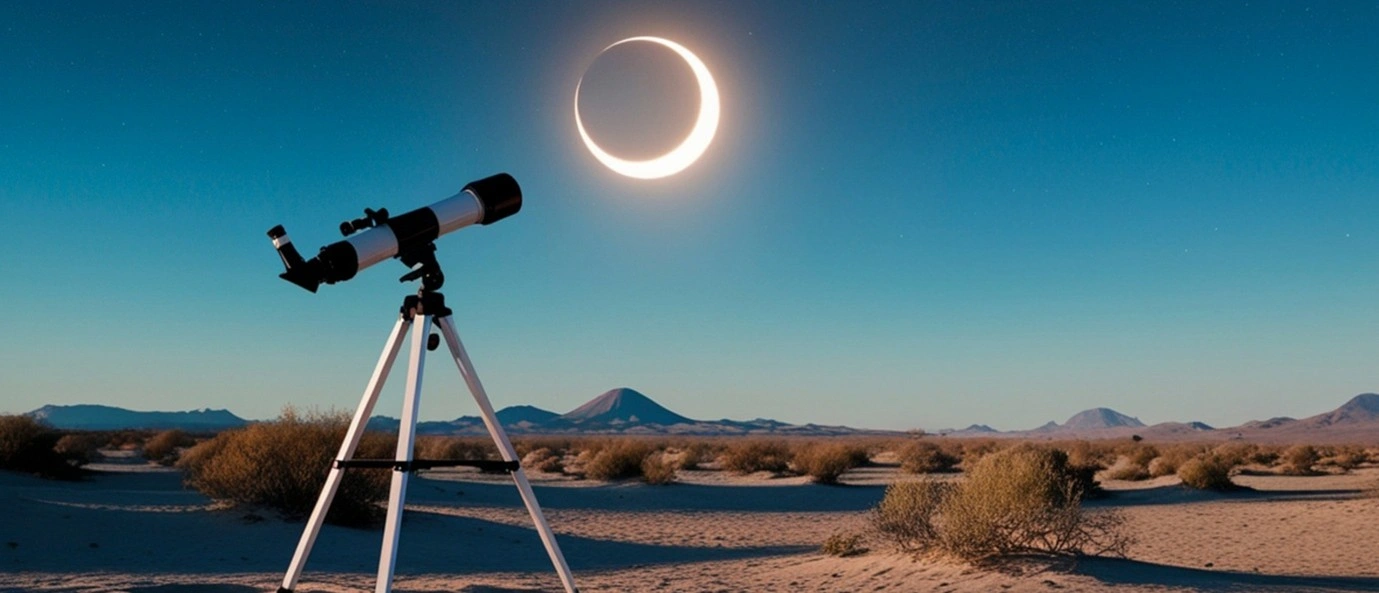Solar Eclipse Guide to Worker Safety
- 5 min read
- November 18, 2025

Solar eclipse worker safety is a priority for Canadian employers as they prepare for the rare celestial event. This guide explains the essential protective gear, OHS-aligned procedures, and training steps required to keep outdoor workers safe during the 2024 solar eclipse.
Solar Eclipse Worker Safety Guidelines for Canadian Employers
The upcoming solar eclipse is a rare and exciting moment, but it also presents unique hazards for anyone working outdoors. Canadian employers have a responsibility under the OHSA to protect workers from eye injuries caused by direct sun exposure, including during an eclipse.
This blog outlines essential precautions such as using ISO 12312-2-certified eclipse glasses, delivering safety talks, and ensuring visibility to help workplaces remain compliant and safe. With proper planning, training, and protective equipment, organisations can let workers safely enjoy the event while maintaining strong health and safety standards.
Understanding Solar Eclipse Worker Safety and Why It Matters
This makes solar eclipse worker safety essential for anyone working outdoors. A total solar eclipse occurs when the moon passes between Earth and the sun, creating temporary darkness. While fascinating, this alignment intensifies risks for outdoor workers, drivers, construction crews, and teams working near reflective surfaces.
Why It’s Dangerous to Look at an Eclipse
- Harmful UV radiation can cause permanent retinal damage
- Ordinary sunglasses offer no protection
- Indirect viewing without proper equipment can still be risky
Safe Viewing: What Workers Must Use and Avoid
A total solar eclipse occurs when the moon passes between Earth and the sun, creating temporary darkness. While fascinating, this alignment intensifies risks for outdoor workers, drivers, construction crews, and teams working near reflective surfaces.
Approved Equipment (Safe)
- ISO 12312-2 certified eclipse glasses
- Solar viewers meeting international safety standards
- Pinhole projectors for indirect viewing
- Official livestreams (NASA, CSA, news networks)
Unsafe Equipment (DO NOT Use)
- Normal sunglasses (even very dark ones)
- Phones, cameras, or binoculars without solar filters
- Welding masks Shade 14 only

Workplace Preparedness for Solar Eclipse Worker Safety
Employers must integrate solar eclipse worker safety into their OHS procedures.
Essential Employer Responsibilities
- Provide certified protective eyewear
- Deliver a mandatory safety talk on eclipse risks
- Ensure workers wear high-visibility clothing
- Monitor workers for vision symptoms
- Reinforce compliance with OHSA and OHS standards
High-Risk Work Environments
Reflection makes solar eclipse worker safety even more important in these job sites. Certain workplaces face amplified risks due to reflective surfaces:
- Construction sites
- Large bodies of water
- Glass-clad buildings
- Open industrial yards
- High-elevation job sites
Reflection increases UV exposure, making certified eyewear mandatory.
Strategies to Improve Solar Eclipse Worker Safety
These strategies help maintain high standards of solar eclipse worker safety, especially for outdoor teams.
- Hold a toolbox talk on eye safety and eclipse hazards
- Ensure outdoor workers have ISO-certified eyewear
- Reinforce visibility, lighting, and positioning on job sites
- Encourage indirect or online viewing if workers are uncomfortable
- Provide immediate medical support for dizziness, eye irritation, vision spots
Critical Safety Warning
⚠️ Bold Reminder: Even during totality, looking at the sun without certified protection can cause irreversible eye damage. Protect workers by enforcing strict eyewear rules and supervising outdoor tasks.
Join Us in Shaping a Safer Future
Ensure your workers stay safe during the rare April 8 solar eclipse.
If your organization needs help preparing safety protocols, training workers, or aligning with OHSA,
for expert guidance and compliant workplace safety solutions.
Frequently Asked Questions
Is it safe for workers to look at the solar eclipse with regular sunglasses?
No. Regular sunglasses do not block dangerous solar radiation. Workers must use ISO 12312-2 certified eclipse glasses.
What if my job site loses visibility during totality?
Employers should provide high-visibility gear, ensure lighting, and pause tasks that require visual precision.
Do employers have legal obligations during the eclipse?
Yes. Under the OHSA, employers must take every precaution reasonable to protect workers including eye safety during unusual conditions.
Can workers watch the eclipse indoors?
Yes, using livestreams or indirect viewing methods, which eliminate risk.
What should I do if a worker reports vision issues after viewing the eclipse?
Seek immediate medical attention and document the incident per OHS requirements.
A Shared Step Toward Safer Workplaces
Ontario’s WSIB rebates and premium cuts are more than policy they’re an invitation to act.
Whether you need to optimize your safety programs, enhance employee training, or develop a safety-first culture, 4S Consulting and 4SafeCom™ can help you achieve your compliance goals.


